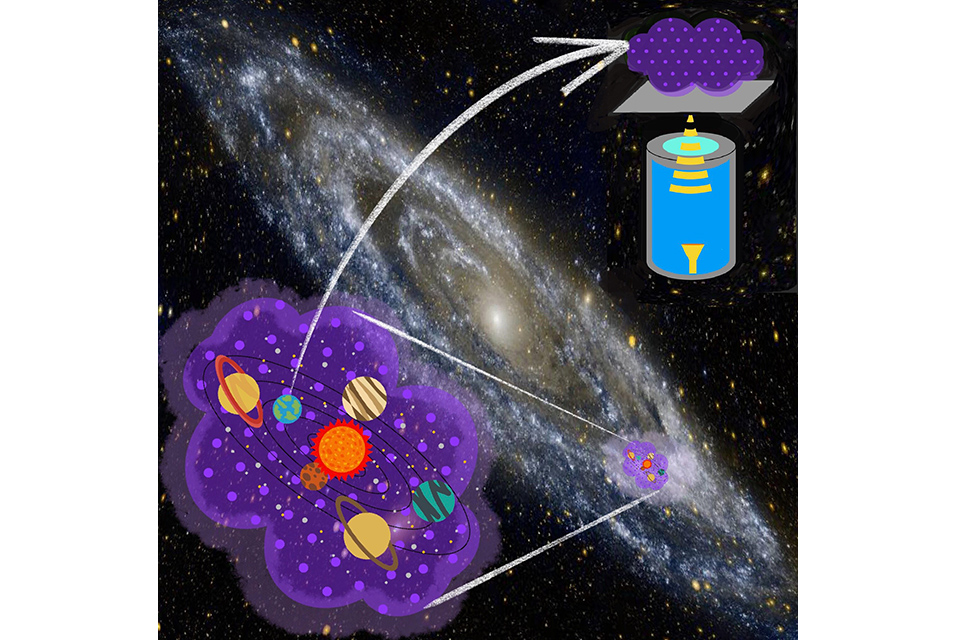KYOTO.- There may have been more than one way to bring the biblical Goliath down, but David chose to attack using a small stone with a slingshot.
In the same spirit, scientists have approached the mystery of dark matter—which constitutes roughly one fourth of the universe—not by direct observation but rather by recording its gravitational effects on visible matter.
A team of researchers at
Kyoto University have now established an experimental method for examining ultra-light dark matter around 0.1 milli-electron volts, applying a technology for millimeter-wave sensing in cryogenic conditions, characterized by low thermal noise. The paper is published in the journal Physical Review Letters.
"We achieved experimental parameters for unexplored mass range of dark photon dark matter—or DPDM—by using new techniques previously untested in this field," says lead author Shunsuke Adachi.
The elusive mass of a single dark matter particle has been assumed to be heavier than that of a proton. Adachi's team's search for ultra-low-mass dark matter addresses the extremely challenging problem of detection that has eluded scientists for over three decades.
"Our research on millimeter-wave technologies may further the development in advanced telecommunications such as 5G and 6G," adds Adachi.
A dedicated millimeter-wave receiver is cooled to -270 ℃ to suppress thermal noise to accommodate weak conversion photons. This cryogenic receiver is used to search for DPDMs with a mass range of about 0.1 meV.
Adachi posits that although his team didn't find any significant signal in this dataset, by conducting their experiments with unprecedentedly stringent constraints—tighter than cosmological constraints—they opened up possibilities for investigating dark matter.
Ordinary photons are theoretically converted from dark photons using metal plate surfaces. These conversion photons correspond to the mass of dark photons because of energy conservation. For example, the conversion photon frequency of 10–300 GHz corresponds to dark photon mass from 0.05 to 1 meV.
"We are thrilled that our small team were able to obtain important results from our high-sensitivity experiments for detecting DPDMs in an unexplored mass range," says Adachi.









